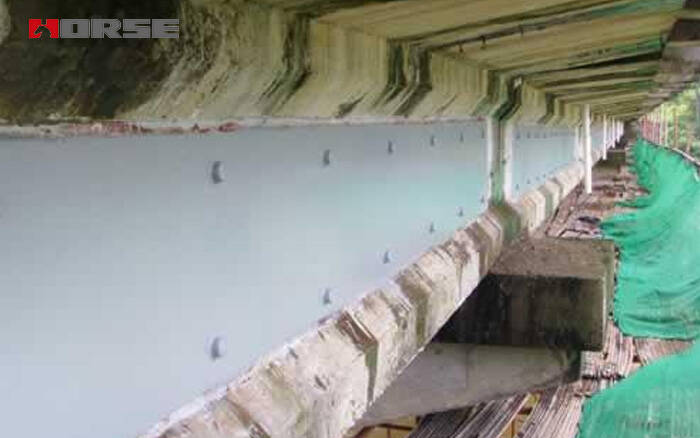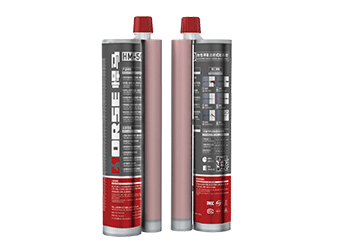Solutions
Horse Construction offers full range of structural strengthening materials with technical supports, documentation supports, products supports, project supports.
Sticking steel plate reinforcement can seal the cracks and defects of the bonding parts, restrain the deformation of concrete, and effectively improve the stiffness and crack resistance of the strengthened components.

(1) in order to improve the flexural ability of the bridge structure, the steel plate is generally attached to the surface of the pulling edge of the member, so that the steel plate and the original structure are formed as a whole. At this time, the local shear strength of the concrete at the bond of the steel plate and the concrete is controlled. The design of reasonable and safe should be controlled before the yield deformation of the steel plate, and the concrete does not appear shear failure.
(2) when the main tensile stress area of the bridge structure is insufficient, in order to strengthen and increase the shear strength of the structure, the steel plate can be pasted on the side of the structure, and it is inclined vertically in the direction of the shear crack (the slope is generally 45º -60º) to bear the main tensile stress.
(3) when the steel plate is used to strengthen, the steel plate can be considered as the section of the steel bar, and the steel plate is converted into steel. The original component bears the constant load and the live load, and the increased steel plate bears the part of the live load that the original component can not bear.
(4) in structural design, the steel plates for reinforcement can be used in different shapes according to actual needs, but the thickness of the steel plate must be larger than the calculated thickness. The steel plate used for bending resistance is as thin and wide as possible, the thickness is generally 4mm-6mm, and the thin steel plate can have enough elasticity to adapt to the surface shape of the component. The thickness of the steel plate used for improving shear capacity should be thicker, depending on the design.
(5) when the length of the steel plate is designed, the ends of the steel plate should be extended to the low pressure area to reduce the stress concentration in the anchorage section of the steel plate, and to prevent the occurrence of cracks in the parts of the bonded parts or the pull off of the steel plate.
(6) to reinforce the bridge by bonding method, how to ensure the formation of the overall force of the steel plate and the reinforced component is the key to the success of the reinforcement. Therefore, in the reinforcement design, in addition to the sufficient anchoring length of the steel plate, the adhesive strength and durability, to avoid the plate in the free end degumming, the end can be avoided. It is fixed with the clamping bolt, or the U type hoop plate, the horizontal anchorage plate and so on, and the bolt is fixed on the steel plate at a certain distance to ensure that the bonding force between the steel plate and the concrete meets the needs of the tensile or shear strength.
You can find anything here you are in need of, have a trust trying on these products, you will find the big difference after that.

two-components modified epoxy resin adhesive, with high quality plastic tube, double cartridge package

Two-component epoxy modified epoxy structural strengthening adhesive for bonded steel plate to concrete

Modified epoxy resin structural perfusion adhesive, specifically for supporting adhesive bonded steel reinforcement